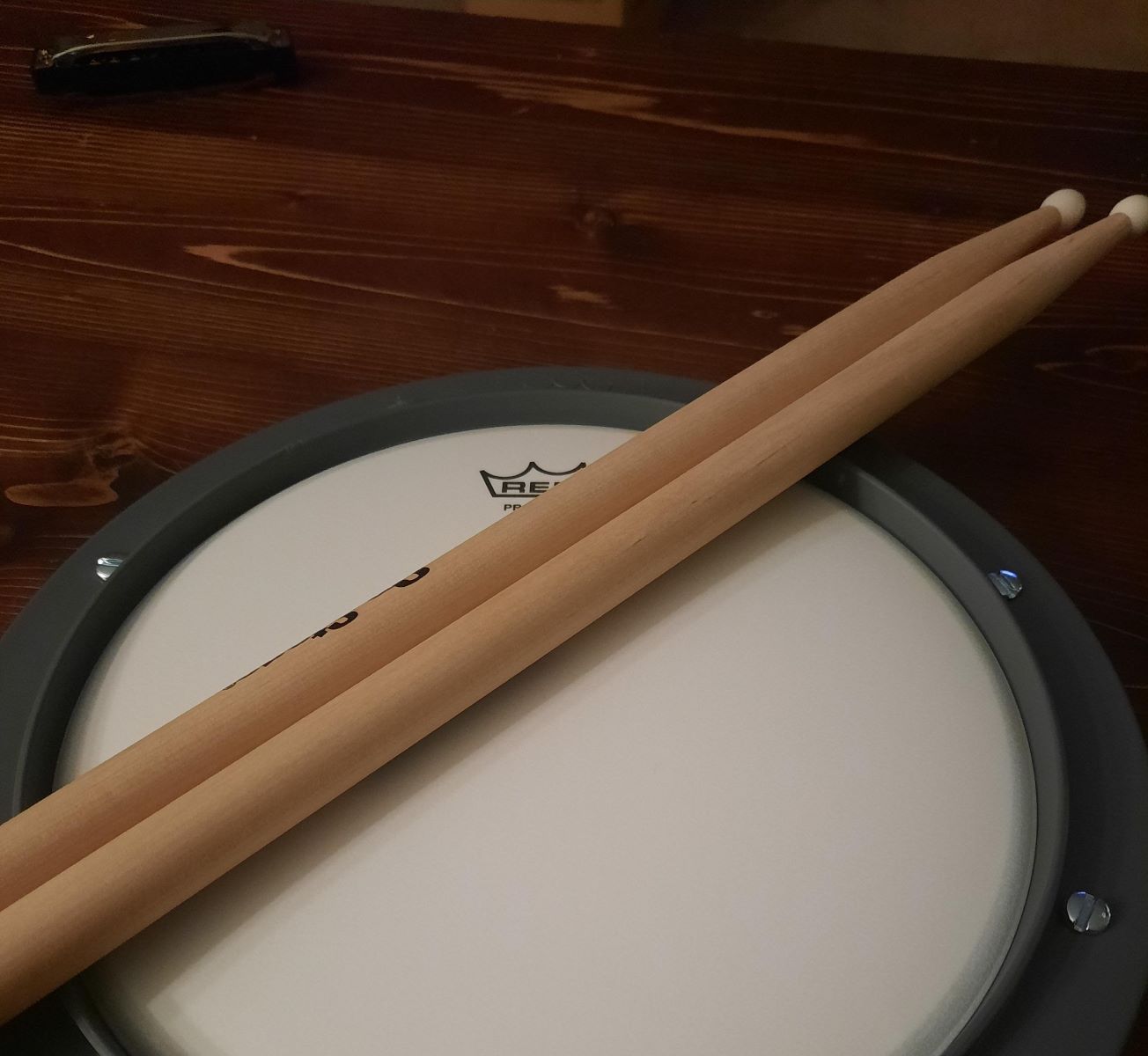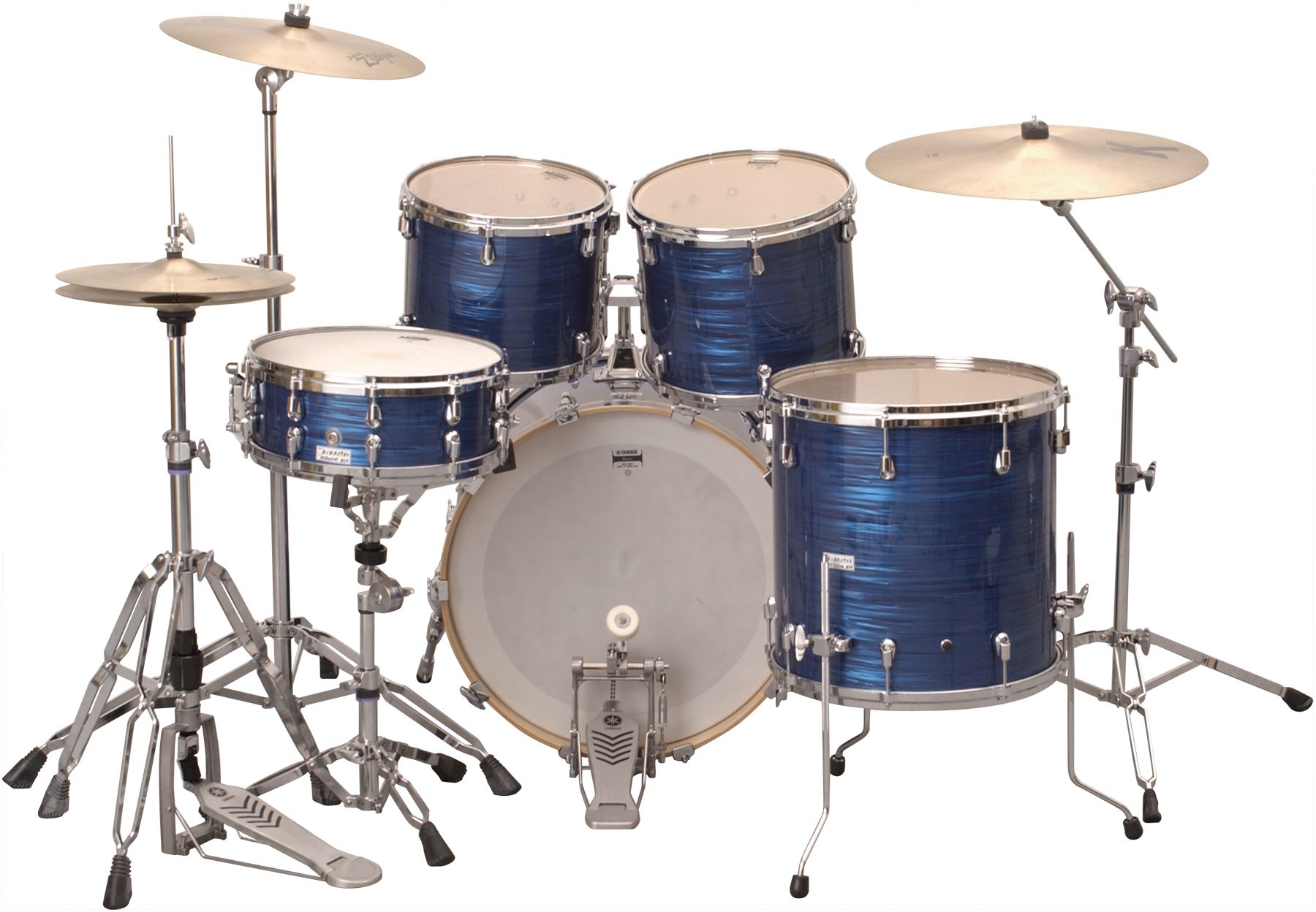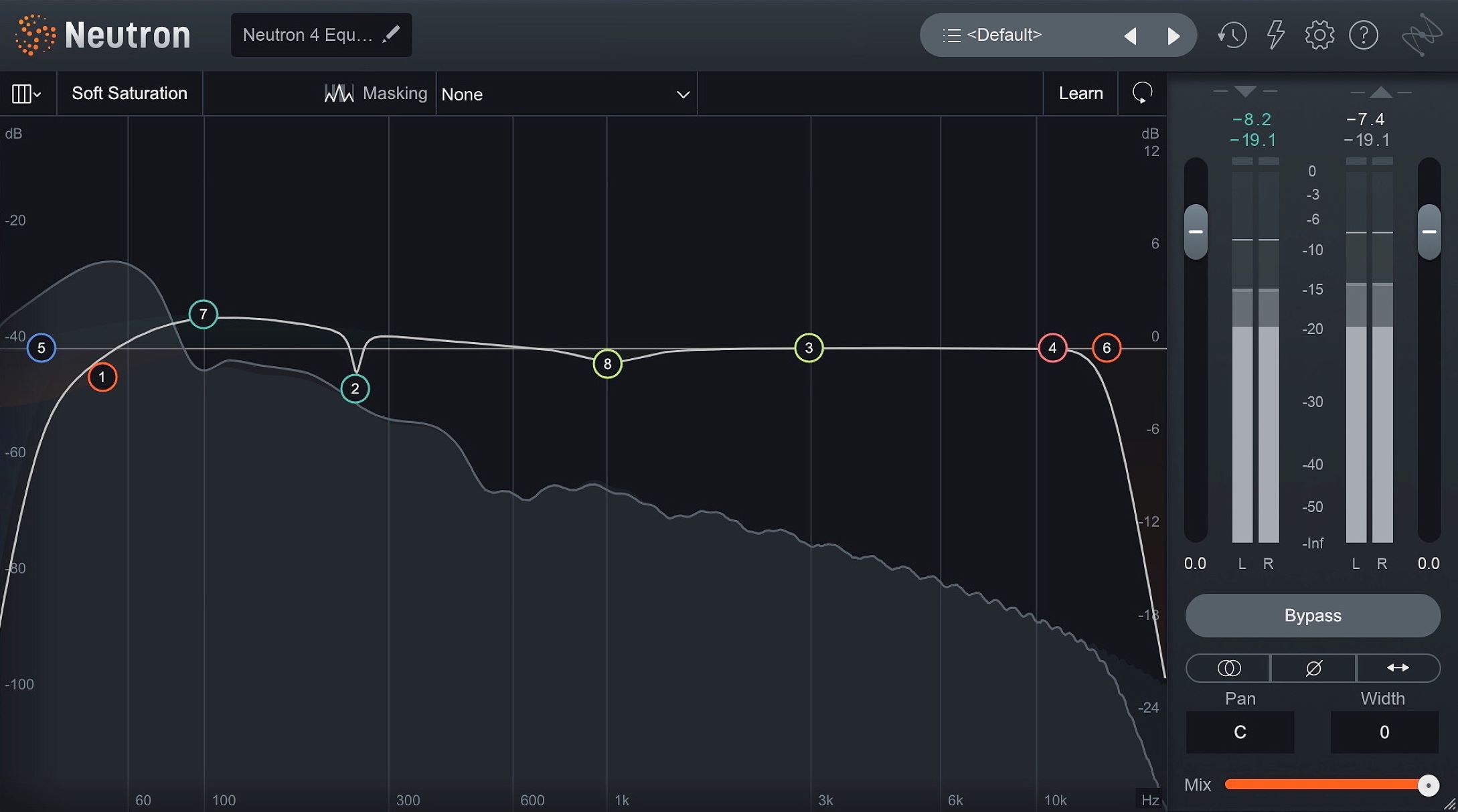Home>Instruments>Drums>How To Gain More Stability On Drums


Drums
How To Gain More Stability On Drums
Published: February 7, 2024
Learn how to improve your drumming stability with expert tips and techniques. Enhance your drumming skills and performance with these proven methods.
(Many of the links in this article redirect to a specific reviewed product. Your purchase of these products through affiliate links helps to generate commission for AudioLover.com, at no extra cost. Learn more)
Table of Contents
Introduction
Introduction
Playing the drums is an exhilarating experience that requires precision, coordination, and rhythm. Whether you are a beginner or an experienced drummer, achieving stability while playing is crucial for delivering a consistent and powerful performance. In this comprehensive guide, we will explore the essential techniques and strategies to enhance stability on the drums. From understanding the significance of stability to implementing proper posture, utilizing the right equipment, and incorporating strengthening and relaxation techniques, this article will equip you with valuable insights to elevate your drumming prowess.
Stability forms the foundation of exceptional drumming, enabling you to maintain control, execute dynamic fills, and anchor the rhythm with unwavering confidence. By delving into the intricacies of body mechanics, equipment selection, and targeted exercises, you can fortify your stability and elevate your drumming skills to new heights. Whether you aspire to captivate audiences with intricate solos or provide a solid rhythmic foundation for a band, mastering stability on the drums is an indispensable endeavor.
Throughout this guide, we will unravel the secrets to achieving optimal stability, empowering you to unleash your full potential as a drummer. By implementing the techniques outlined in the following sections, you will embark on a transformative journey toward greater control, finesse, and artistry behind the drum kit. Let's embark on this rhythmic odyssey and discover the keys to unlocking unparalleled stability on the drums.
Understanding the Importance of Stability
Stability lies at the core of proficient drumming, serving as the linchpin that upholds the entire rhythmic structure. Without stability, a drummer may struggle to maintain consistent timing, execute complex patterns, and deliver a cohesive performance. Whether you are performing live or recording in the studio, stability forms the bedrock upon which your drumming prowess is showcased.
One of the primary reasons why stability is paramount for drummers is its direct impact on the overall sound and feel of the music. When a drummer possesses unwavering stability, the entire band benefits from a solid rhythmic foundation, allowing other musicians to build upon this stable framework with confidence. Moreover, stability enables drummers to execute precise and impactful fills, seamlessly transition between different rhythmic patterns, and contribute to the musical synergy that defines a captivating performance.
Furthermore, stability plays a pivotal role in injury prevention and physical well-being. Drumming, especially during high-energy performances, can exert significant strain on the body. By prioritizing stability, drummers can reduce the risk of muscle fatigue, strain, and potential injuries, thus ensuring longevity and sustained enjoyment in their musical pursuits.
Beyond the technical and physical aspects, stability also fosters a sense of confidence and assurance in a drummer’s abilities. When you feel secure and grounded behind the drum kit, you can channel your focus and energy into elevating your musical expression, rather than expending mental bandwidth on compensating for instability.
Ultimately, stability is not merely a technical prerequisite for drumming; it is the cornerstone that underpins the entire rhythmic tapestry, elevating performances from ordinary to extraordinary. By recognizing the profound significance of stability in drumming, you can embark on a purposeful journey toward honing this essential skill and unlocking new dimensions of musicality and artistry.
Improving Posture and Body Mechanics
Enhancing stability on the drums begins with cultivating proper posture and body mechanics. A drummer’s posture directly influences their ability to maintain control, execute precise movements, and mitigate physical strain. By adopting the following strategies, drummers can optimize their posture and body mechanics to bolster stability and overall performance.
First and foremost, posture encompasses the alignment of the spine, shoulders, and limbs. Situating yourself at an appropriate distance from the drum kit ensures that your posture remains conducive to stability. Maintaining an upright and relaxed posture enables optimal blood flow and oxygenation of muscles, contributing to sustained endurance and dexterity during extended playing sessions.
Concurrently, mindful positioning of the drum throne and height adjustment is pivotal in promoting proper posture. The ideal throne height allows for a comfortable 90-degree angle at the knees, facilitating balanced weight distribution and minimizing undue strain on the lower back and legs. Additionally, aligning the drum kit components within easy reach mitigates the need for excessive reaching or leaning, thereby promoting fluid and efficient movement while drumming.
Moreover, conscientious attention to body mechanics during drumming maneuvers is instrumental in fortifying stability. Focusing on fluid and controlled motions, particularly when executing fills and intricate patterns, can mitigate the risk of overexertion and enhance precision. Additionally, integrating ergonomic drumming techniques, such as utilizing the rebound of drumsticks and distributing force evenly across drumheads, contributes to sustainable and stable playing.
Embracing a holistic approach to posture and body mechanics involves prioritizing physical conditioning and flexibility. Engaging in targeted exercises to strengthen core muscles, improve flexibility, and enhance overall physical fitness supports the maintenance of stable and balanced posture during prolonged drumming sessions.
By conscientiously refining posture and body mechanics, drummers lay the groundwork for unwavering stability behind the kit. These foundational elements not only foster longevity and physical well-being but also serve as catalysts for elevating the quality and impact of their drumming performances.
Utilizing the Right Equipment
Equipping oneself with the appropriate gear is pivotal in enhancing stability and optimizing the drumming experience. From selecting the right drum kit components to choosing ergonomic hardware and accessories, the strategic utilization of equipment can significantly contribute to a drummer’s stability and overall performance.
When it comes to drum kits, the configuration and placement of components play a crucial role in promoting stability. Ensuring that the drums, cymbals, and pedals are positioned ergonomically facilitates seamless movement and accessibility during performances. Additionally, investing in a sturdy and well-constructed drum throne with adjustable height and ample padding is essential for supporting proper posture and enduring comfort during extended playing sessions.
Furthermore, the selection of drumsticks and drumheads directly impacts a drummer’s stability and control. Opting for drumsticks that align with your preferred weight, length, and tip shape enhances precision and minimizes fatigue, contributing to sustained stability throughout performances. Similarly, utilizing high-quality drumheads that offer consistent responsiveness and durability empowers drummers to maintain a stable and articulate sound, even during intense playing dynamics.
Hardware such as drum pedals, stands, and mounts also plays a pivotal role in fortifying stability. Investing in robust and reliable pedals with smooth action and adjustable settings enables drummers to execute intricate footwork with confidence and consistency. Sturdy cymbal and tom mounts contribute to the secure positioning of components, reducing unwanted movement and enhancing overall stability during energetic performances.
Moreover, the incorporation of ergonomic accessories, such as drumming gloves for enhanced grip and comfort, can augment stability by minimizing slippage and reducing the impact of prolonged playing on the hands and wrists. Additionally, utilizing noise-reducing ear protection fosters a conducive playing environment, allowing drummers to maintain focus and stability amidst varying sound levels.
By thoughtfully selecting and optimizing the utilization of drumming equipment, drummers can cultivate an environment that fosters stability, comfort, and control. The strategic integration of tailored gear not only enhances the drumming experience but also underpins the foundation for achieving unwavering stability and musical excellence behind the kit.
Strengthening Techniques for Stability
Building physical strength and endurance is instrumental in fortifying stability and control during drumming performances. By incorporating targeted strengthening techniques into their practice routines, drummers can enhance their muscular resilience, coordination, and overall stability behind the kit.
One of the primary areas of focus for strengthening is the development of core muscles. The core serves as the central support system for a drummer’s posture and movement, playing a pivotal role in maintaining stability and balance. Engaging in core-strengthening exercises, such as planks, Russian twists, and leg raises, can bolster the stability of the torso and pelvis, enabling drummers to sustain optimal posture and control during extended playing sessions.
Additionally, targeted strength training for the upper and lower extremities contributes to enhanced stability and endurance. Incorporating exercises that target the arms, wrists, and hands, such as wrist curls, forearm planks, and finger resistance training, can fortify the muscular resilience required for sustained drumming precision and control. Similarly, lower body strengthening exercises, including squats, lunges, and calf raises, support balanced weight distribution and stability during footwork and pedal control.
Furthermore, integrating cardiovascular conditioning into a drummer’s fitness regimen can significantly enhance overall stability and endurance. Engaging in activities such as running, cycling, or high-intensity interval training not only augments cardiovascular fitness but also fosters sustained energy levels and stamina during prolonged drumming performances.
Moreover, the incorporation of balance and coordination exercises, such as single-leg stands, stability ball drills, and agility ladder drills, can refine a drummer’s proprioception and spatial awareness, contributing to enhanced stability and control over movements behind the kit.
By integrating a comprehensive array of strengthening techniques into their practice routines, drummers can cultivate the physical resilience and stability necessary for delivering commanding and precise performances. These targeted exercises not only fortify the muscular foundations of drumming but also lay the groundwork for sustained endurance, control, and artistry within the rhythmic domain.
Implementing Breathing and Relaxation Techniques
Amidst the dynamic and often intense nature of drumming, integrating breathing and relaxation techniques is paramount for fostering stability, composure, and sustained endurance. By incorporating mindful breathing practices and relaxation strategies into their playing routines, drummers can cultivate a heightened sense of control, mental clarity, and physical relaxation, all of which are essential elements for maintaining stability behind the kit.
Conscious breathing serves as a foundational pillar for promoting stability and focus during drumming performances. By adopting diaphragmatic breathing, characterized by deep inhalations that engage the diaphragm and expand the lower abdomen, drummers can optimize oxygen intake and mitigate the impact of performance-related stress on the body. Furthermore, rhythmic breathing patterns synchronized with musical phrases can enhance internal pacing and contribute to a sense of groundedness and stability while playing.
Integrating relaxation techniques, such as progressive muscle relaxation and mindfulness meditation, into pre-performance rituals or practice sessions can foster a state of calm and centeredness. By systematically releasing tension from various muscle groups and cultivating present-moment awareness, drummers can mitigate the onset of performance-related anxiety and physical strain, thereby promoting stability and fluidity in their playing.
Additionally, the incorporation of visualization and mental rehearsal techniques can contribute to heightened stability and confidence during drumming performances. By visualizing successful and controlled playing scenarios, drummers can prime their minds and bodies for stability, precision, and unwavering composure, thus enhancing their overall performance quality.
Moreover, embracing relaxation techniques such as controlled breathing, visualization, and mindfulness not only fosters stability during performances but also supports overall well-being and resilience in the face of the physical and mental demands of drumming.
By integrating these breathing and relaxation techniques into their playing routines, drummers can cultivate a harmonious balance between physical exertion and mental composure, thereby amplifying their stability, endurance, and artistry behind the drum kit.
Conclusion
Embarking on the quest for stability on the drums unveils a transformative journey that transcends technical proficiency and delves into the realms of physical well-being, mental composure, and artistic expression. Throughout this comprehensive guide, we have navigated the essential elements that underpin stability on the drums, equipping drummers with invaluable insights and strategies to elevate their playing to new heights.
From understanding the profound significance of stability as the bedrock of exceptional drumming to honing posture, body mechanics, and breathing techniques, each facet contributes to the cultivation of unwavering stability behind the kit. By embracing targeted strengthening exercises, selecting the right equipment, and integrating relaxation practices, drummers fortify their physical and mental foundations, laying the groundwork for commanding and precise performances.
As drummers internalize the principles of stability, they not only enhance their technical prowess but also foster a profound sense of confidence, control, and resilience. Stability on the drums transcends mere physical steadiness; it embodies the synergy of mind, body, and instrument, culminating in performances that resonate with power, finesse, and unwavering precision.
Ultimately, the pursuit of stability on the drums is a holistic endeavor that encompasses physical conditioning, mental fortitude, and a deep reverence for the rhythmic art form. By embracing the principles outlined in this guide, drummers embark on a transformative odyssey, transcending technical proficiency to unlock the profound artistry and stability that define exceptional drumming.
As you continue to refine your craft and embark on your rhythmic odyssey, may the pursuit of stability imbue your playing with a sense of purpose, control, and unyielding artistry, laying the foundation for performances that resonate with unwavering stability and captivating musicality.











